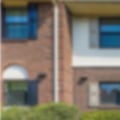In the competitive Pasco real estate market, mold can significantly hinder a property's sale potential. Sellers must adopt effective mold remediation strategies not only to enhance safety but also to elevate market appeal. By understanding the types of mold and assessing the extent of damage, homeowners can implement targeted remediation techniques that foster buyer confidence. However, the process doesn't end with remediation; it's crucial to consider how these efforts can be showcased to maximize property value. What strategies can sellers employ to ensure their homes stand out in a crowded marketplace?
Understanding Mold Issues
Mold issues are pervasive in real estate, affecting property value and occupant health. The presence of mold can lead to significant financial repercussions, as properties with mold problems often face diminished market appeal and increased difficulty securing financing or insurance. Moreover, mold exposure has been linked to various health issues, including respiratory problems, allergies, and other serious conditions, making it imperative for property owners and potential buyers to understand the implications of mold health.
One of the challenges in addressing mold issues is the prevalence of mold myths that can perpetuate misunderstandings about its risks and remediation. For instance, many believe that all mold is toxic, when in fact, while some mold types can produce harmful mycotoxins, others are relatively harmless. This misconception can lead to unnecessary panic and costly remediation efforts. Some property owners underestimate the importance of addressing even small mold infestations, believing they can manage the problem with simple cleaning methods. In reality, effective remediation often requires specialized techniques and professional intervention to ensure that the underlying moisture issues are resolved.
Understanding the reality of mold issues and dispelling common mold myths is essential for informed decision-making in real estate. By doing so, property owners can protect their investments and the health of occupants, while potential buyers can make educated choices that consider the true risks associated with mold.
Identifying Mold Types
While various mold types exist, understanding their characteristics is crucial for effective remediation and risk assessment in real estate. Mold can be broadly categorized into three common types: allergenic, pathogenic, and toxic. Allergenic molds, such as Cladosporium and Alternaria, often trigger allergic reactions in sensitive individuals. Pathogenic molds, including Aspergillus, can pose health risks, particularly those with compromised immune systems. Toxic molds, like Stachybotrys chartarum—commonly known as black mold—produce mycotoxins that can lead to severe health issues.
Effective mold identification methods are essential for property owners and real estate professionals. Visual inspections play a significant role, focusing on damp areas, discoloration, or unusual odors. Additionally, air sampling and surface testing can help determine the mold type present. These methods enable a more accurate assessment of the mold's potential impact on health and property value.
It is important to note that not all molds are visible to the naked eye, so employing a combination of identification methods is vital. Understanding the common mold types in a property allows for tailored remediation strategies, ensuring that the right approaches are taken to mitigate risks. Furthermore, proper identification can facilitate transparent communication with potential buyers or renters, enhancing trust and confidence in the property's condition. By prioritizing mold identification, real estate professionals can effectively navigate the market's complexities and proactively address mold-related concerns.
Assessing Mold Damage
A thorough assessment of mold damage is essential for determining the extent of contamination and the necessary remediation steps. This process begins with a comprehensive mold inspection, which should be conducted by a certified professional experienced in identifying and evaluating mold issues. During this inspection, areas affected by moisture, such as basements, attics, and behind walls, should be closely examined to identify visible mold and any hidden growth that may pose a risk.
The damage assessment involves evaluating the severity of the mold infestation, including the types of mold present and the materials impacted. This evaluation is crucial, as different mold species can require varying levels of intervention. Professionals typically employ moisture meters and thermal imaging technology to detect hidden moisture, a key factor in mold growth.
Additionally, establishing the source of moisture is critical, as it must be addressed to prevent future mold issues. The assessment should also consider the potential health impacts on occupants, as prolonged exposure to mold can lead to respiratory problems and other health concerns.
A detailed report documenting the mold inspection and damage assessment findings will provide homeowners with a clear understanding of the situation. This report is essential for informing effective remediation strategies and ensuring all necessary precautions are taken to restore the property to a safe and healthy environment. Proper assessment is the foundation of effective mold remediation and a critical step in protecting property values and occupant health.
Effective Remediation Techniques
Implementing effective remediation techniques is essential to eliminate mold contamination and restore a safe environment. The first step in any mold removal process is to identify and assess the source of moisture that allows mold to thrive. Without addressing the underlying moisture issue, any remediation efforts will be futile. Once the source is controlled, various remediation methods can be employed.
One common technique is physical removal, where affected materials, such as drywall or carpeting, are carefully disposed of. This is particularly necessary for porous materials that cannot be effectively cleaned. For non-porous surfaces, cleaning with commercial mold removal solutions or a mixture of water and detergent can eradicate mold spores.
Another effective remediation method is the application of HEPA (High-Efficiency Particulate Air) filtration systems during the cleanup process. These filters can capture airborne spores and prevent them from spreading throughout the home. Additionally, encapsulation can be employed, where a sealing agent is applied to surfaces that have been cleaned, preventing future mold growth.
For extensive mold infestations, it may be necessary to engage professional mold remediation services. These experts utilize advanced techniques and equipment to ensure comprehensive mold removal and restoration. Ultimately, the choice of remediation methods should be guided by the extent of the contamination and the specific materials affected, ensuring a thorough and efficient restoration process.
Preventing Future Mold Growth
Effective strategies for preventing future mold growth are crucial for maintaining a healthy living environment. Mold thrives in damp, humid conditions, making humidity control a primary focus in mold prevention efforts. Homeowners should regularly monitor indoor humidity levels, ideally keeping them between 30% and 50%. Utilizing dehumidifiers and air conditioners can significantly reduce moisture levels, especially in areas prone to high humidity, such as basements and bathrooms.
Proper ventilation is another essential component of mold prevention. Ensuring that kitchens and bathrooms have exhaust fans can help dissipate moisture from cooking and showering. Additionally, opening windows and providing adequate airflow throughout the home can further assist in maintaining low humidity levels.
Another effective strategy is routine inspections of areas susceptible to water leaks. Check plumbing fixtures, roofs, and windows for any signs of leaks, addressing issues promptly to prevent water accumulation. When landscaping, ensure that the yard slopes away from the house to direct rainwater away from the foundation, reducing the risk of moisture intrusion.
Lastly, consider using mold-resistant products when renovating or building. These materials can help inhibit mold growth, particularly in high-risk areas. By implementing these proactive mold prevention strategies, homeowners can significantly reduce the likelihood of future mold infestations, ensuring a healthier living space and preserving the integrity of their property.
Enhancing Property Value
While maintaining a mold-free environment is essential for health, it also significantly enhances property value. Properties that have undergone effective mold remediation ensure safety and present a more appealing atmosphere for potential buyers. A clean, mold-free home communicates to buyers that the property has been well cared for, which can lead to higher offers.
Investing in property upgrades is a strategic move that can significantly boost a home's marketability. For instance, modernizing bathrooms and kitchens or enhancing outdoor spaces can create a lasting impression. When buyers see that a home is free from mold and benefits from aesthetic improvements, they are more inclined to envision themselves living there.
Moreover, addressing mold issues can prevent potential buyers from being deterred by health concerns and costly repairs. By prioritizing mold remediation, homeowners can mitigate risks and enhance the overall value of their property. This proactive approach can also lead to a quicker sale, as buyers often favor homes that require minimal immediate work.
Ultimately, a mold-free environment coupled with thoughtful property upgrades and aesthetic improvements creates a compelling narrative for prospective buyers. It communicates the safety of the space and the pride of ownership invested in the property. This combination can make all the difference in a competitive market, ensuring the property stands out and appeals to discerning buyers.
Marketing Your Mold-Free Home
Marketing a mold-free home requires a strategic approach highlighting the property's safety and aesthetics. The first step is to leverage comprehensive home staging techniques that showcase the home's potential. A well-staged home enhances visual appeal and allows prospective buyers to envision themselves living in the space. Focus on decluttering, utilizing neutral colors, and accentuating natural light to create an inviting atmosphere that speaks to a broad audience.
Besides staging, buyer education is crucial in marketing. Educating potential buyers about the mold remediation efforts undertaken ensures transparency and builds trust. Detailed documentation of the remediation process, including before-and-after photos, can further emphasize the property's mold-free status. Highlighting certifications from reputable mold remediation professionals can also reassure buyers that the home is safe and well-maintained.
Moreover, effective marketing should utilize various platforms, including social media, real estate websites, and open houses, to reach a wider audience. Crafting compelling listings that emphasize the home's mold-free condition while showcasing its unique features will attract more interest. Engaging storytelling that connects the property's history with recent improvements can resonate with potential buyers, making the home more memorable.
Ultimately, strategic home staging and robust buyer education will significantly enhance the marketing efforts for a mold-free home, leading to a faster and more profitable sale.
Contact A Reliable Mold Remediation Company In Pasco, Washington
Selling a home in Pasco’s competitive real estate market requires more than curb appeal—it demands a safe, clean, and free property from mold issues. Effective mold remediation protects your home’s value and reassures buyers that they’re making a sound investment. By addressing mold concerns early and professionally, you can speed up the selling process and maximize your home’s market potential.
Don’t let mold stand in the way of a quick and successful home sale. Contact a reliable mold remediation company such as Robinson Restoration - Tri-Cities today and ensure your property is in top shape for potential buyers.



